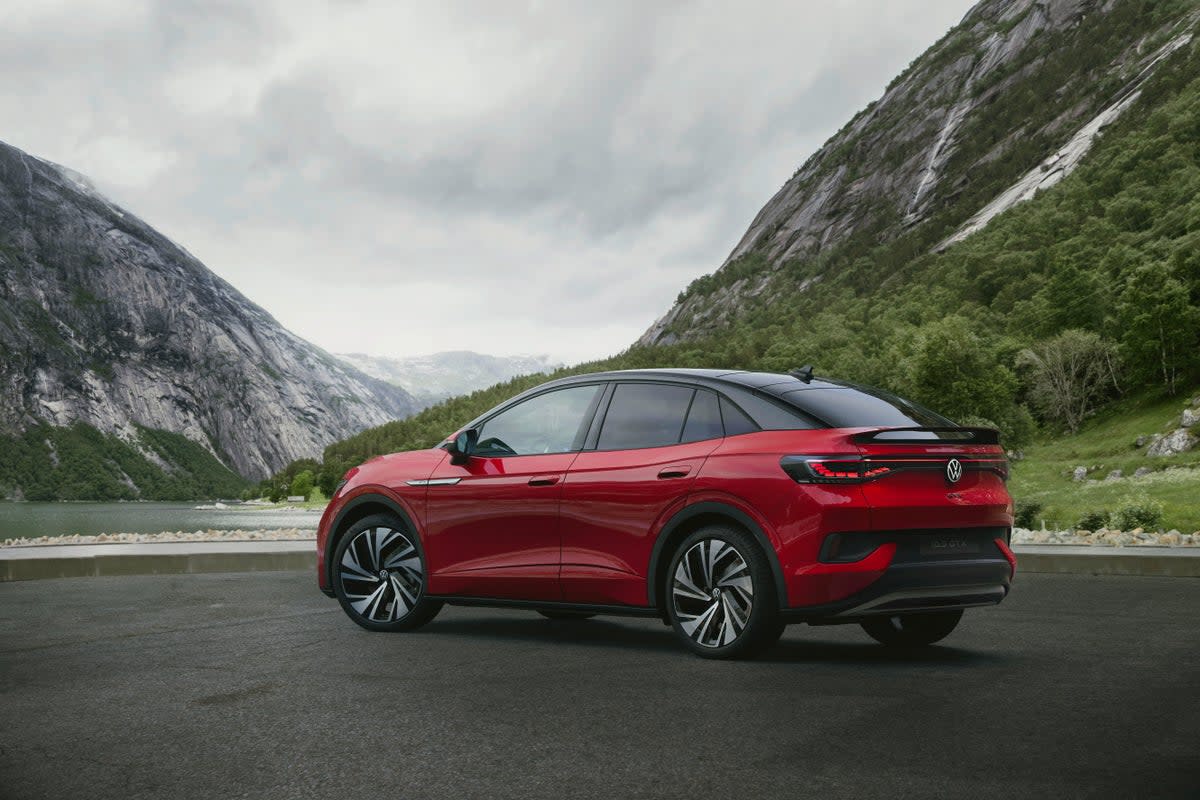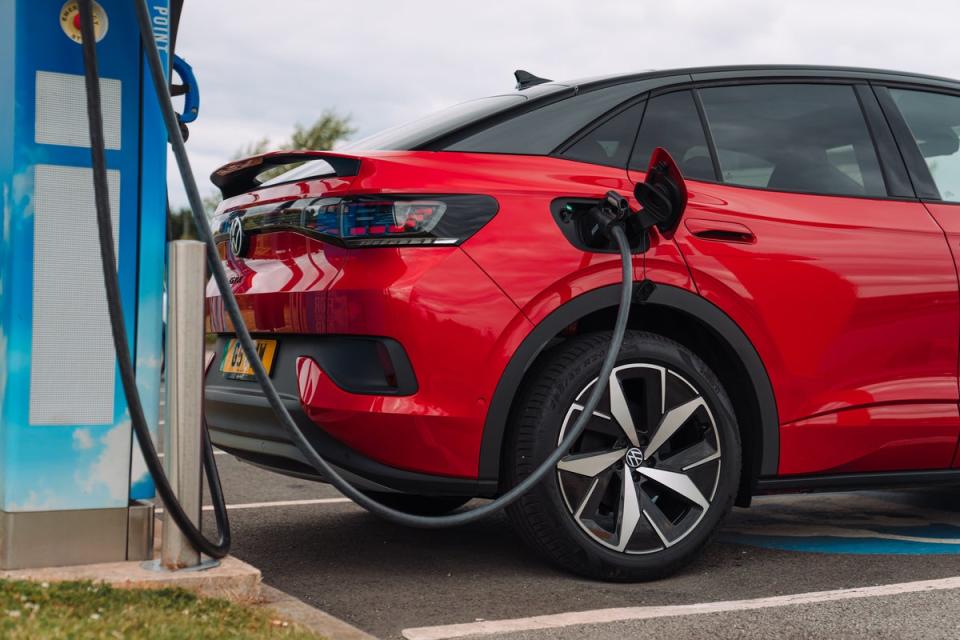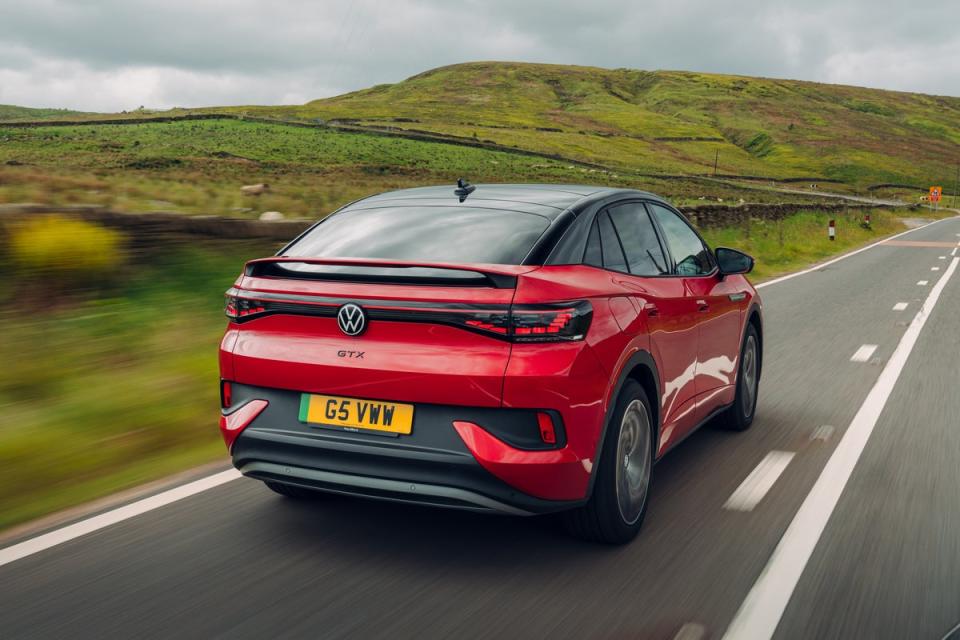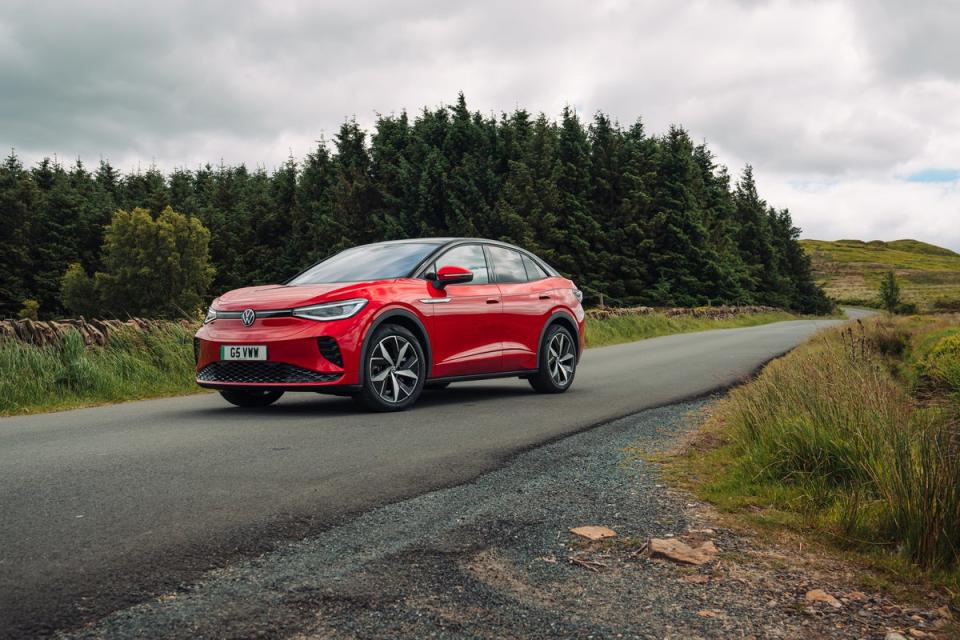Car review: the Volkswagen ID.5 GTX has a lot to be said for it

As an exemplar of the new generation of safe, economical, green, capable and, most important, practical battery-electric cars (ie all-electric, not hybrid) the Volkswagen ID.5 GTX has a lot to be said for it.
It’s based on the VW ID.4 compact “crossover” SUV, but now with a cut-down roof and coupe lines to widen its appeal. I have to say that it’s not the handsomest beast on the road in that regard – the latest retro-styled Hyundai Ioniq 6 is much the most distinctive and attractive shape around – and it’s not that much more of an aesthetic improvement on the ID.4, though there’s no real penalty in rear load space and versatility, which is good – the upside of its boxy proportions.

I guess the problem, if such it is, is that the VW “ID” family of vehicles are basically quite chunky, bulky-looking things – with the exception of the ID.Buzz, of course, their nostalgic people carrier/1960s micro-bus take on the concept. Nice as it is, an ID.5 isn’t going to start a commotion.

Perhaps a little embarrassing for intragroup rivalry, the Skoda Enyaq Coupe plonks a more pleasing-looking shape atop the common VW-group platform. For all its curves, stunning alloy wheels and contrasting black roof, the ID.5 doesn’t make much of an impact.
That about sums up the VW ID.5, though I don’t mean to damn it with faint praise. It’s not breathtakingly better at any particular thing than the increasingly intense competition that surrounds it, but it does everything quite well, and – and I stress in EV terms – is solid value for money. For many potential customers that is more than good enough.
THE SPEC
Volkswagen ID.5 GTX 82kWh
Price: £56,545 (as tested; range starts at £50,710
Engine capacity: Twin electric motors, AWD, powered by 82kWh battery
Power: 299 PS
Top speed: 112mph
0-60mph: 6.3secs
Fuel economy: 4m/kWh
CO2 emissions: 0
From an established brand you may be assured that the build quality is excellent (unlike some trendier rivals) and as a European-based brand there shouldn’t be too many geopolitical risks involved (provided they can establish more capacity for manufacturing electric vehicle componentry in Europe rather than China).
Electric cars make the most sense generally in both economic and environmental terms if they are used freely and retained in good condition for a fairly long time – and we may have to get used to holding on to our cars for longer than the current three-year leasing cycle in our greener world. Fortunately, longevity is, of course, a traditional VW virtue.

So is a nice, habitable, driver-friendly cabin, and the ID.5 reflects another fairly consistent VW tradition, which is a preference for rather sober dark interiors. The VW ID.3, by contrast, did “wow” its customers with its fresh, light and airy feel to the interior, and some of its control features are replicated here, too – I especially like the twist’n’go dial for the automatic gear selector at the top of the instrument pod.
The VW touchscreen is as technically impressive as it can be practically irritating to try and use, and I really wonder whether the craze for giant touchscreens with complex menus and oversensitive reactions has gone a bit too far in modern cars. I also have a nagging doubt about how well these things will be working after, say, 15 years in use, compared to the sturdy buttons and switches on a trad Golf or Passat. We shall see.

In terms of performance and engineering, and as a top-of-the-range offering, the GTX version of the ID.5 is also quite impressive. You get a pretty big battery pack, which gives you a wide spectrum of choices – extremely long range in economy mode, or brisk performance in the sportiest of settings. This is even more useful than it might sound when you remember that an electric car on a long motorway journey on a cold day really does need all the help it can get to maximise its efficiency; but you also want it to accelerate when you need it to, and not just at the lower speeds electric vehicles always excel at.

The GTX is also equipped with a kind of four-wheel-drive system with twin electric motors on each axle, all complemented with clever electronics to deliver smooth, assured performance.
The only thing I can really fault the ID.5 GTX version for is that it doesn’t quite live up to the promise of a GTX badge. It’s just not that fast, and there’s no sense of occasion attached to it, in the way there is with its petrol-powered Golf GTI cousin. It needs to be a little more involving, but, as I say, for many it’s simply a modern, highly competent, VW electric car, and that’s more than enough.

